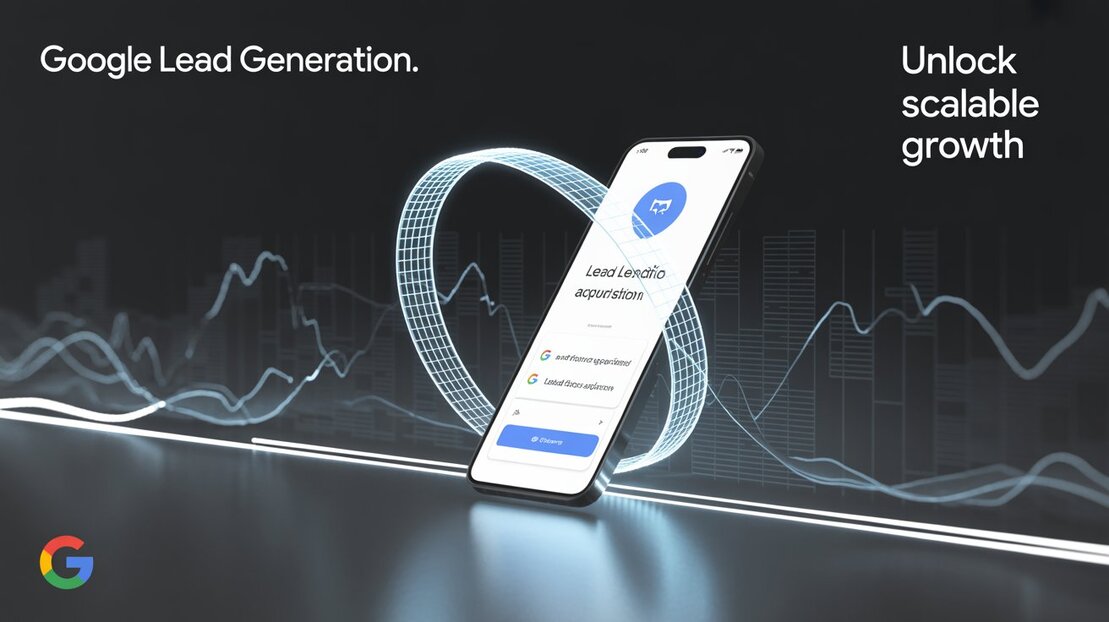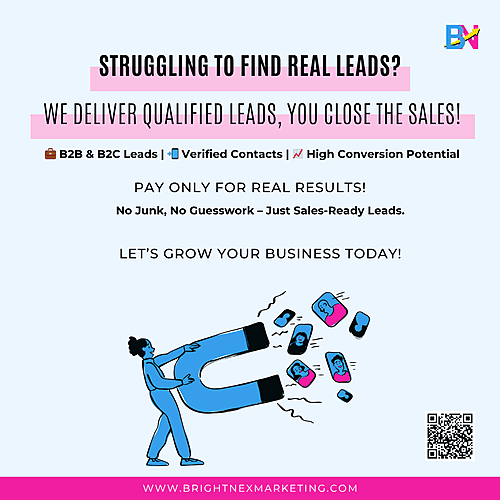Generating quality leads is the lifeline of every successful online business. And when it comes to scalable, targeted lead acquisition, Google lead generation continues to dominate. But here's the catch — while many businesses use Google Ads or search-based marketing, only a select few achieve long-term lead generation success.
So, what are smart marketers doing differently with Google lead generation that others aren’t? In this article, we’ll uncover the strategies, tools, and insights that distinguish top performers from average campaigns.
What Is Google Lead Generation?
Google lead generation refers to using Google's platforms — such as Google Ads, Search, Display Network, and even YouTube — to attract, engage, and convert potential customers into qualified leads. These leads may include form submissions, phone calls, or newsletter sign-ups — essentially, anyone showing interest in your product or service.
Why Google Is Still the #1 Source for Leads
With over 8.5 billion searches per day, Google offers unmatched reach and targeting precision. Whether you’re targeting B2B decision-makers or local customers, Google’s data-driven platforms allow you to engage users at the exact moment they express interest.
Smart marketers understand this opportunity — and instead of running broad or generic ads, they personalize every interaction using intent signals, audience behavior, and predictive data.
What Smart Marketers Are Doing Differently with Google Lead Generation
Let’s break down the proven strategies that separate winners from the rest:
1. Focusing on Buyer Intent Instead of Just Keywords
Smart marketers don’t just rely on keyword tools — they analyze buyer intent behind those keywords. Instead of targeting high-volume terms, they focus on long-tail keywords that indicate readiness to convert (e.g., “best CRM for small business 2025”).
This approach improves both conversion rates and Cost Per Lead (CPL).
2. Building High-Converting Landing Pages
A well-optimized landing page is essential to converting traffic into leads. Unlike typical campaigns that direct users to a home page, top marketers create:
Fast-loading, mobile-optimized pages
Clear and benefit-driven headlines
Lead forms with a strong Call to Action (CTA)
Social proof such as testimonials or ratings
This attention to post-click experience is what drives true Google lead generation success.
3. A/B Testing Every Stage of the Funnel
Rather than “set and forget,” high-performing marketers continuously test:
Ad copy
Bidding strategies
Audience segments
Landing page variations
They use tools like Google Optimize, Hotjar, and Analytics to monitor behavior and improve the lead-to-sale conversion pipeline.
4. Using Smart Bidding and AI-Powered Tools
Google’s AI is smarter than ever. Savvy marketers leverage Smart Bidding strategies like:
Target CPA (Cost Per Acquisition)
Maximize Conversions
Target ROAS (Return on Ad Spend)
These features help automate bidding while focusing on conversions, not just clicks. Google lead generation campaigns with AI integration often outperform manual bidding in both efficiency and scale.
5. Integrating SEO with Paid Lead Generation
Top digital marketers know that organic and paid strategies complement each other. They:
Use high-converting keywords in both Google Ads and SEO
Retarget organic visitors with display ads
Repurpose blog content into paid ad campaigns
This hybrid strategy reduces dependency on a single channel and builds a sustainable lead ecosystem.
6. Segmenting & Retargeting Audiences Smartly
Google lead generation doesn’t stop at the first visit. Smart marketers use remarketing campaigns to reach:
Website visitors who didn’t convert
Cart abandoners
Past customers with new offers
They create segmented ads tailored to different buyer stages, increasing engagement and conversion likelihood.
7. Tracking Micro-Conversions and Setting Real KPIs
Instead of focusing solely on final conversions, top marketers track:
Click-through rate (CTR)
Time on site
Form abandonment
Call duration or quality
These micro-conversions reveal user intent and funnel efficiency, helping teams optimize the campaign before it fails.
Common Mistakes to Avoid in Google Lead Generation
Not every marketer succeeds — here are mistakes smart marketers avoid:
Ignoring landing page speed and UX
Using too many broad-match keywords
Not excluding irrelevant traffic via negative keywords
Failing to track actual lead quality
Over-relying on automation without human review
By avoiding these pitfalls, smart marketers ensure their Google lead generation efforts bring real ROI.
Final Thoughts: It's Time to Think Smarter
Google offers a massive opportunity for generating leads — but only if approached strategically. Marketers who win at Google lead generation don’t rely on luck or spend alone. They optimize every touchpoint, understand intent, leverage automation smartly, and commit to continuous improvement.
Want to scale your lead funnel and stop wasting ad spend? Start thinking like a smart marketer — test, optimize, and let data guide your growth.
Ready to Maximize Your Google Lead Generation?
If you’re struggling to get consistent, qualified leads from Google, it’s time to rethink your strategy. Work with professionals who understand the nuances and systems that drive results.



